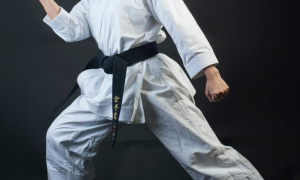Discover the best martial arts for kids in 2023 with this definitive guide to the top styles that build confidence, discipline and fitness. When searching for what is the best martial art for kids, families want more than just physical activity – they seek life skills, coordination and self-control. That’s why we’ve curated 6 of the best martial arts for kids that provide tailored training and invaluable development.
Although modern martial arts trace back to 527 AD, they remain an effective tool to teach kids respect, discipline and control. With so many options in 2023, choosing the best martial art for your child is tougher than ever. Luckily, FamilyProz is here to help by presenting the ultimate guide to selecting the best martial art for your kid.
Table of Contents
Toggle![]()
What are Martial Arts?
Martial arts are codified systems and traditions of combat practices, which originated in ancient cultures. These time-honored practices use the body’s natural weapons, like fists, feet and legs, for striking or grappling an opponent. Primarily utilized for self-defense and warfare, martial arts have evolved into popular methods of boosting physical fitness and mental wellbeing.
According to surveys, martial arts have an estimated 100 million practitioners worldwide. Some of the most popular styles include karate, taekwondo, judo and Brazilian jiu-jitsu. Studies show martial arts training improves cardiovascular health, strength, flexibility and reduces stress. The practices teach invaluable skills like discipline, confidence and self-control – making it hard to decide what the best martial art for kids is as they individually offer so much.![]()
6 Best Martial Arts for Kids to learn in 2023
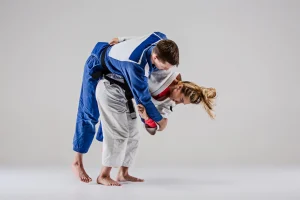
Judo – The Gentle Martial Art
Judo, meaning “gentle way” in Japanese, is a traditional martial art founded by Jigoro Kano in 1882. With its throws, pins, joint locks and grappling techniques, judo aims to subdue opponents through leverage rather than brute strength. For kids, Judo goes beyond just being a great sport and activity. When searching for the best martial arts for kids, judo stands out for its immense benefits to a child’s physical and personal development.
Regular judo training enhances kids’ fitness, coordination, strength, and reflexes. The competitive elements also teach focus and perseverance, while sparring builds confidence to responding under pressure. Beyond physical skills, judo instills discipline, humility and respect in kids which are invaluable life lessons. The cultural traditions of Japanese martial arts also engage children’s minds. With so many advantages, it’s clear why judo is consistently ranked one of the best martial arts for kids.
If seeking a fun, fast-paced martial art deeply rooted in tradition, judo is an excellent choice. The “gentle way” provides a supportive path for kids to unlock their potential and nurture their body and spirit.
Advantages of Judo For Kids:
- One of the most effective Martial Arts:
Judo serves as an exceptional avenue for enhancing physical fitness, refining coordination, and sharpening reflexes in the growing years of children. - It is an Olympic Sport and has a competitive presence:
Judo for youngsters is not just about acquiring skills but also about embracing healthy competition. Local, regional, and national tournaments add a sense of achievement and sportsmanship. - Physically taxing:
Excellent for the development of kids
Disadvantages of Judo For Kids:
- Doesn’t involve strikes like many other Martial Arts:
While judo excels in throws and grappling, it may entail less emphasis on striking techniques, differing from some other martial arts. - Often schools restrict teaching to cater for Olympic judo rule:
It’s important to note that certain judo institutions may focus predominantly on sport-oriented training tailored for competitive arenas.
![]()
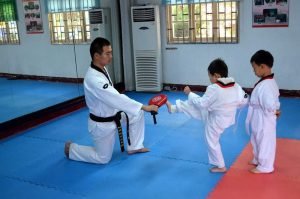
Karate
Karate, meaning “empty hand” in Japanese, originated on the island of Okinawa. As a striking art, karate focuses on punches, kicks, strikes and blocks to disable opponents. Students also learn kata – formal sequences of techniques that improve form, balance and breathing.
A key benefit of Karate for Kids is its accessibility – with punching and kicking easy to comprehend, karate provides a simple yet engaging entry point. The tiered ranking system also allows continuous progression, helping build confidence and discipline. Kids can also participate in tournaments to test their skills competitively.
Advantages of Karate For Kids:
- Great confidence builder:
The basic punches, kicks and stances provide a simple foundation for beginners to grasp the art quickly and start building proficiency. Yet the variety of advanced kata and techniques offer unlimited potential for progression. - Widely popular:
As one of the world’s most popular martial arts, finding a reputable karate school or dojo in most areas should not be an issue. This accessibility allows interested kids easy entry into training. - Gives opportunity to learn about Japan and Japanese culture:
Karate origins provide a gateway for kids to gain exposure to Japanese traditions, philosophy, etiquette and language. Classes also instill cultural values like discipline and respect.
Disadvantages of Karate For Kids:
- Doesn’t cover groundwork or grappling:
The striking focus means limited training in throws, joint manipulations or submissions compared to arts like judo or jiu-jitsu. - Not all schools offer sparring or further competitive aspects:
Quality and frequency of live sparring varies. Competition opportunities beyond in-school tournaments may be limited. - Not as effective in real-world self-defense as other martial arts:
The lack of live grappling may leave some karateka underprepared to defend against takedowns and submission holds compared to practitioners of arts like Brazilian jiu-jitsu.
![]()

Brazilian Jiu Jitsu – BJJ
Brazilian Jiu-Jitsu (BJJ) originated from traditional Japanese Jiu-Jitsu, introduced to Brazil in the early 1900s by the influential Gracie family. With its focus on leverage and technique over strength, BJJ is one of the most effective martial arts for smaller practitioners to subdue larger opponents. This makes BJJ an excellent choice when researching the best martial arts for kids.
BJJ teaches young students grappling, throws and submission holds like arm locks and chokeholds. By training against fully resisting partners, kids develop the skills and confidence to control larger adversaries. BJJ’s emphasis on leverage enables smaller kids to overcome bigger bullies through superior technique.
Unlike some martial arts, BJJ has a robust competitive circuit with tournaments for all ages and skill levels. This gives focused kids a constructive environment to test themselves and build their competencies. Above all, BJJ instills crucial virtues like discipline, perseverance and respect.
Advantages of BJJ For Kids:
- One of if not the most effective Martial Arts:
BJJ’s focus on leverage and technique makes it excellent for smaller practitioners to control and submit larger, stronger opponents. This efficacy has been proven in competitive events like early UFC tournaments. - Rankings through belts and stripes achieved in BJJ are acknowledgments of effort:
The ranking system provides kids measurable progress and achievement to strive towards, helping motivate consistent training. - It teaches about the importance of remaining calm and using both body and mind:
BJJ promotes staying relaxed under intense grappling pressure. Students learn to intelligently set up techniques vs brute force.
Disadvantages of BJJ For Kids:
- It is very close contact which may be a problem for some:
The constant grappling involved may make some kids uncomfortable, especially given the close physical proximity. - Doesn’t involve many punches or kicks:
BJJ focuses heavily on mat work over striking, which may disappoint kids seeking a more well-rounded system. - Has been criticized for its relatively high rate of injury:
While some studies show BJJ may be safer than most contact sports, the dynamic sparring could increase minor injury risk like mat burns or twisted joints for kids. However, supervised training mitigates this well.
![]()

Taekwondo
Elevating its prominence as a favored choice among parents exploring martial arts options for children, Taekwondo emerges as a captivating art form. Hailing from Korea, this striking discipline is renowned for its dynamic blend of punches, kicks, and mesmerizing gymnastic techniques. From the awe-inspiring head-height kicks that exude power to the agility-demanding jumping spinning kicks and rapid-fire kicking sequences, Taekwondo fosters the development of muscle strength, flexibility, and balance in young practitioners.
While sharing certain physical and mental benefits with karate, Taekwondo distinguishes itself through its heightened emphasis on full-body engagement and the competitive dimension. This unique focus empowers children to embrace the realm of sport and competition, enriching their understanding of resilience and achievement. Taekwondo’s practical application and its alignment with a broader range of scenarios render it an especially relevant martial art for youngsters to explore.
Advantages of Taekwondo For Kids:
- Very Discipline focused:
Taekwondo strongly emphasizes the core Korean tenets of courtesy, integrity, perseverance, self-control and indomitable spirit. Kids learn respect, manners and emotional control. - Improves Flexibility and Mobility:
The high, spinning kicks and deep stances build excellent lower body flexibility and balance. Mobility drills enhance range of motion. - Provides great defense knowledge:
Taekwondo trains effective, powerful kicks and strikes to fend off assailants at a distance. The footwork and distancing help kids defend against attacks.
Disadvantages of Taekwondo For Kids:
- Too defense orientated:
The primary focus on strikes and distancing means less training in grappling, throws or submissions for well-rounded self-defense. - Many schools have questionable teaching standards:
As its popularity grew, questionable McDojo-style schools arose that emphasize costs over quality instruction. Finding a reputable school is crucial. - Little to no grappling technique:
Taekwondo lacks ground fighting skills, which may leave kids unprepared against takedowns compared to judo or jiu-jitsu.
![]()

Wrestling
Wrestling is a combat sport that involves grappling and ground fighting. It is a physical and mental competition in which two opponents attempt to gain control of each other through a combination of strength, technique, and strategy.
The goal of Wrestling is to wrestle the opponent to the ground, maintain control of them, and then score points. This can be accomplished using a variety of techniques such as holds, pins, and throws, among others. Points are awarded for various positions and moves, and the wrestler with the most points at the end of the match is declared the winner.
Wrestling is a physically demanding sport that necessitates fitness, strength, endurance, and flexibility. It also requires a high level of technique, strategy, and mental fortitude. It can be practised at various levels, from amateur to professional, and in various styles, such as folkstyle, freestyle, and Greco-Roman, each with its own set of rules and techniques.
The martial art is a popular sport in high schools and colleges across the United States, and it’s also a common training discipline for other combat sports like MMA (mixed martial arts) because it allows a fighter to control and subdue their opponent on the ground. Its popularity and prevalence in high schools makes it a strong contender for one of the best martial arts for kids.
Advantages of Wrestling For Kids:
- One of the most physically demanding Martial Arts which will help kids develop:
The intense cardio, conditioning drills, resistance training and live matches build tremendous overall athleticism in kids. - Extremely useful for other Martial Arts and sports alike:
Wrestling skills directly translate to takedown defense, scrambling and ground control in MMA, BJJ and other grappling arts. - Popular in High Schools and Colleges:
Wrestling teams and classes are common in most school systems, providing kids easy access to coaching and competition during their studies.
Disadvantages of Wrestling For Kids:
- Requires weight cuts for competitions which is very unhealthy if done incorrectly:
Making weight through dehydration or starvation can be detrimental to growing kids. Responsible weight management supervised by coaches is critical. - Very close contact which may be a problem for some:
The constant physical battles for position and leverage may make some young kids uncomfortable compared to striking arts.
![]()
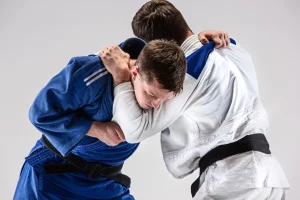
Aikido
Aikido is a unique Japanese martial art dating back to the early 1900s that promotes peaceful conflict resolution. Using an attacker’s momentum and energy rather than brute force, Aikido aims to neutralize aggression without harm. For parents researching the best martial arts for kids, Aikido stands out for its non-violent philosophy and focus on inner development over competition.
Students known as aikidoka train against partners called uke, practicing elaborate joint locks, pins, throws and evasion techniques. Classes emphasize mind-body unity, flexibility, balance and leveraging opponents’ movements. Kids develop self-control and discipline while gaining practical self-defense skills.
Unlike combative martial arts, Aikido is non-competitive with no tournaments. The non-aggressive principles provide a less intimidating entry point for shy or uncoordinated kids. Its spiritual Japanese origins also offer cultural enrichment. While progress can be slow mastering subtle techniques, Aikido offers children a peaceful path to improve themselves physically and mentally.
Advantages of Aikido For Kids:
- Spiritual and culture rich:
Aikido integrates spiritual elements like meditation and promotes peacefulness. Japanese customs and language exposure also engage kids. - Accessible to everyone – “easy” to get into:
Aikido’s flowing, low-impact movements and lack of strength focus allows broad accessibility for unathletic kids. - Self-defense oriented with plenty of sparring:
Rotating partners and varied attacks teach effective self-defense skills applicable for smaller kids facing larger attackers.
Disadvantages of Aikido For Kids:
- Does not teach attacks:
“the best defense is a good offense” – The purely defensive focus means kids do not learn strikes or takedowns to disable attackers first. - Takes a very long time to learn and master
The nuances of using opponents’ energy and momentum takes extensive practice. Kids may find progress slow compared to other martial arts.
Ranking the Best Martial Arts For Kids
FamilyProz has compiled this list ranking the top martial arts for empowering kids. We aimed to highlight styles with the best blend of character development, physical conditioning, practical defense and life lessons. If we missed your favorite martial art for kids, please let us know!
| Rank | Martial Art | Reasons |
|---|---|---|
| 1 | Brazilian Jiu-Jitsu | Teaches kids leverage and technique to overcome larger opponents. Dynamic sparring builds confidence and discipline. |
| 2 | Wrestling | Intense conditioning and live matches build tremendous athleticism and mental toughness. Essential takedown and ground skills. |
| 3 | Judo | Blend of character development, fitness and competitive excellence. Throws and submissions promote coordination. |
| 4 | Karate | Beginner-friendly strikes and values provide solid foundations. Chance to learn Japanese culture. |
| 5 | Taekwondo | Develops flexibility, power and focus through intricate kicking curriculum. Promotes perseverance and control. |
| 6 | Aikido | Non-aggressive philosophy offers less intimidating entry point. Teaches subtle control and redirection of opponents. |
Brazilian Jiu-Jitsu’s leverage techniques and dynamic sparring make it our top choice for most kids. However, every child has unique needs – see which style motivates your kid’s body and mind!
The Safest Martial Art For Kids
It’s difficult to say which martial art is “safest” for kids because each has its own set of risks and benefits. However, some martial arts are thought to be safer for children than others.
Here is the top 3 from our list:
-
Aikido:
Aikido is a defensive martial art that emphasises using an opponent’s energy and momentum against them rather than brute strength. It is a nonviolent martial art that teaches children how to peacefully resolve conflicts and develop self-control.
-
Judo:
Judo is a martial art that emphasises using an opponent’s momentum and energy against them rather than brute force. It promotes physical fitness and overall well-being while also teaching children important life skills such as discipline, focus, and self-control.
-
Karate:
Karate is a martial art that emphasises striking techniques. It is a nonviolent martial art that promotes physical fitness and overall well-being while also teaching children important life skills like discipline, focus, and self-control.
Each child is unique, and when selecting a martial art, it is critical to consider the child’s individual needs and preferences. The training environment and instructor competency are equally critical for safety. Look for schools with padding, qualified teachers and progressive contact levels matched to age/experience. With responsible training, all martial arts can be safe for kids. But less combative styles provide a gentler starting point to build confidence.
![]()
The Benefits of Martial Arts For Kids
When considering the top martial arts for kids, it’s important to understand the multitude of benefits this training provides. To discover the best martial art for your child, analyze how each style can positively impact their development. Our table breaks down the main advantages martial arts deliver across three key areas – physical, mental & emotional, and life skills.
| Physical Benefits | Mental & Emotional Benefits | Life Skills Benefits |
|---|---|---|
| Improved cardiovascular fitness | Increased self-confidence | Learned respect and discipline |
| Enhanced muscle tone and strength | Reduced stress and anxiety | Developed perseverance and grit |
| Flexibility | Improved focus and concentration | Humility and Patience |
| Weight management | Positive attitude and mental well-being | Improved social skills and cooperation |
| Better motor skills and reaction time | Higher self-control | Learnt leadership abilities |
| Stamina and endurance | Heightened Self-awareness | Better conflict resolution |
| Better Balance and Posture | Increased mindfulness and focus | Increased work ethic and responsibility |
| Reduced risk of injury | Enhanced emotional resilience | Enhanced problem-solving skills |
With so many advantages spanning fitness, self-confidence, social abilities, and discipline, it is clear how impactful martial arts can be for developing kids’ minds and bodies. This table serves as an excellent reference for parents and coaches when selecting the best martial arts for children. However, we chose six of the most intriguing advantages of martial arts for children and broke them down for a better explanation.
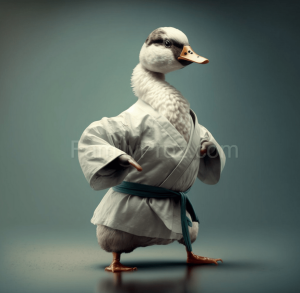
1) Respect
By adhering to rules and directions, paying attention, and exhibiting good manners and etiquette, martial arts educate kids to respect their trainers and training partners. By taking care of themselves and making objectives, they also learn to value their bodies and themselves. As students practise skills with training partners and sparring opponents, they also learn to appreciate others. Many martial arts place a strong emphasis on respect, and young students are taught how to demonstrate that respect by their behaviour and deeds. They earn knowledge about the value of humility as well as how to lose and win with class. The history and tradition of the martial art that kids are learning are also imparted to them with the goal of helping them develop a greater appreciation for the practise.
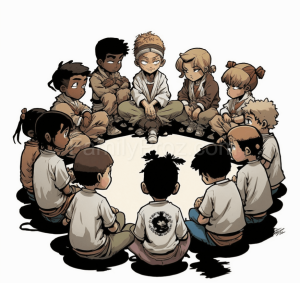
2) Better Social Skills
The structured, group-based training environment of martial arts can teach children valuable social skills. To begin, children learn how to collaborate with others while training and practising techniques with their training partners. They learn how to effectively communicate, share space and equipment, and give constructive feedback. Furthermore, martial arts classes allow children to form friendships with their peers and learn how to interact with people of various ages, backgrounds, and abilities. They learn how to work as part of a team to achieve common goals. Martial arts also teach children to be leaders and to accept responsibility for their own and others’ well-being.

3) Developed Discipline
Children can learn discipline through martial arts in a variety of ways. To begin with, children learn to follow rules and instructions from their instructors, which aids in the development of self-control and focus. They learn how to adhere to a structured training regimen, which can assist them in developing good habits and improving their time management abilities. Furthermore, martial arts classes frequently require children to repeatedly practise specific techniques and forms, which helps them develop patience and perseverance. Children learn that discipline is more than just following rules; it is also about working hard, being consistent, and setting personal goals.
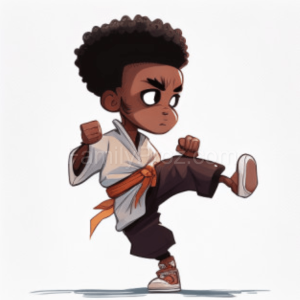
4) Co-ordination
Martial arts can help children develop co-ordination. To begin, children learn to coordinate their movements by practising various techniques such as strikes, kicks, and throws. This can aid in the improvement of their balance, agility, and overall body control. Furthermore, martial arts classes frequently include a variety of exercises and drills that help children improve their hand-eye coordination, reaction time, and spatial awareness.

5) Confidence
Children can develop a sense of accomplishment and self-efficacy by learning to set and achieve goals for themselves. They gain confidence and pride in their abilities as they master new techniques and forms. Martial arts classes frequently offer children the opportunity to put their skills to the test in a safe and controlled environment, such as sparring or competitions. This can assist them in developing resilience and learning how to deal with failure and success. Martial arts also teach children how to defend themselves and to be aware of their surroundings. They learn to read body language and anticipate movements, which can help them in social situations.
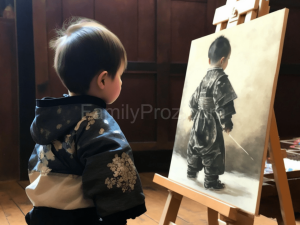
6) Creativity
Martial arts can help children develop their creativity in a number of ways. To begin, martial arts frequently involve the use of a variety of techniques and forms that require children to think critically and apply what they have learned in novel and different ways. Children, for example, are encouraged in some martial arts, such as Brazilian Jiu-Jitsu, to devise their own strategies and techniques that work best for them. This encourages children to think creatively and be resourceful which is counterintuitive to the other wise strict and rigid portrayal of martial arts. Explore more on the topic of martial arts and creativity here.
![]()
What is the best age to start Martial Arts for Kids?
Questions such as “Can a 3 year old learn martial arts?” are a common occurrence. The best age to begin martial arts depends on the child and the martial art being considered. Children as young as three or four years old can generally begin learning martial arts, as long as the training is age-appropriate and the child is physically and mentally ready. Some martial arts, such as Brazilian Jiu-Jitsu, Karate, Tae Kwon Do, and Judo, are better suited to older children, around 5 to 6 years old.
Some of us may wonder, “Is it too late to start martial arts?” and it is important to note that: No, it is never too late to begin martial arts training. Many martial arts schools have students of all ages, and training can provide physical and mental benefits to people of all ages. However, before beginning any new physical activity, you should consult with a physician, especially if you have any pre-existing conditions. It’s also critical to find a martial arts school and instructor who are a good fit for you and your goals.
“Is Martial Arts right for my kid”? : When deciding to begin martial arts, it is critical to consider the child’s maturity level, attention span, and physical capabilities. Parents should also ensure that the school or instructor has a good reputation and that the training is safe and appropriate for their child. It’s also important to remember that martial arts training is a long-term commitment, so make sure your child is interested in and motivated to continue training.

![]()
FAQ

How to Choose the Best Martial Arts For Kids?
Hopefully this article has informed you about martial arts for kids and its various forms. However choosing the right martial art near you can still be a very difficult process. Almost all dojos offer trial lessons to allow you to get a feel of the environment and flow of training. If you find that the first one isn’t right for you, don’t be disheartened, try another one as I can say from personal experience, finding the right one is life changing!
It is worth while to ask around family and friends if they have experience with Martial Arts classes near your area. However if not then searching Martial Arts for kids near me is a good way to start searching.
How to Prepare your Kid for their First Martial Arts Class?
This shouldn’t be an issue as Martial Arts instructors are trained professionals and will have great procedures in place for welcoming new students. However watching a video of a martial arts class can help calm down nerves and set expectations. Dress your child comfortably (not in jeans) and bring water with them to stay hydrated. Remind them to pay attention to the instructor and to always respect their classmates and the class rules.
How to Keep you Kid Interested in Martial Arts
Starting things is never easy especially when it comes to Martial Arts for kids. It is important to keep your child motivated and inspire them to continue their journey within Martial Arts. Encourage them to set goals and keep track of their accomplishments. Give them positive feedback and acknowledge their efforts. Watching a relevant movie such as The Karate Kid never hurt!
Are Martial Arts Good for Kids?
When considering activities for your child’s development, martial arts offer immense benefits for mind, body and character that can last a lifetime. Beyond the fitness and coordination, martial arts instill core values like discipline, respect, humility and perseverance critical for success in all areas of life. The cultural exposure and chance to progress from beginner to master also engage and motivate kids. With so many advantages, it’s clear why martial arts are consistently ranked among the best activities for nurturing well-rounded children.
Of course, each child is unique, so review multiple styles, visit schools and choose the martial art program that aligns with your child’s abilities and interests.



